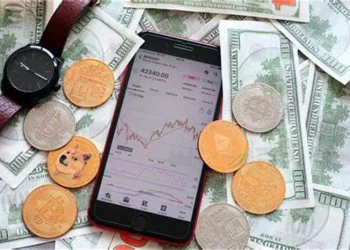Binance is one of the most prominent and largest cryptocurrency exchanges in the world. It offers a wide range of trading pairs and hosts a diverse selection of cryptocurrencies. The availability of different coins on Binance is crucial for the liquidity and accessibility of these digital assets in the global market. In this article, we will explore some of the significant coins listed on Binance, providing detailed information about their features, use cases, and technological aspects.
Bitcoin (BTC)
Bitcoin is the pioneer and the most well-known cryptocurrency. It was introduced in 2009 by an anonymous person or group using the pseudonym Satoshi Nakamoto. Bitcoin is a decentralized digital currency that operates on a peer-to-peer network. It uses blockchain technology to record all transactions in a public ledger. The supply of Bitcoin is limited to 21 million coins. It is often regarded as a store of value, similar to digital gold. Traders and investors flock to Bitcoin due to its long-established reputation and relatively stable market presence. On Binance, Bitcoin is one of the most actively traded assets, with a large number of trading pairs against other cryptocurrencies and fiat currencies in some regions. Its price movements have a significant impact on the overall cryptocurrency market sentiment.
Ethereum (ETH)
Ethereum is a decentralized, open-source blockchain platform that enables the creation and execution of smart contracts. Launched in 2015, it has its native cryptocurrency called Ether. Ethereum has revolutionized the blockchain space by allowing developers to build decentralized applications (dApps) on its network. These dApps can range from decentralized finance (DeFi) platforms, non-fungible token (NFT) marketplaces, to various other innovative projects. The Ethereum blockchain is highly programmable and has a large and active developer community. On Binance, ETH is widely traded and serves as a base currency for many trading pairs. It is an essential part of the DeFi ecosystem and is often used for staking, lending, and other financial activities within the blockchain space.
Binance Coin (BNB)
Binance Coin is the native cryptocurrency of the Binance exchange. It was initially created as an ERC-20 token on the Ethereum blockchain but later migrated to its own mainnet. BNB has multiple use cases within the Binance ecosystem. It can be used to pay for trading fees on the Binance exchange, with users receiving discounts for using BNB. Additionally, BNB is involved in Binance Launchpad, where new projects are launched, and BNB holders can participate in token sales. It is also used in Binance’s staking and savings programs. The value of BNB is closely tied to the success and growth of the Binance exchange. As Binance expands its services and user base, BNB’s utility and demand may increase, making it an attractive investment option for those who believe in the long-term viability of the Binance platform.
Cardano (ADA)
Cardano is a blockchain platform that aims to provide a more sustainable and scalable infrastructure for the development of decentralized applications. It was founded by Charles Hoskinson, one of the co-founders of Ethereum. Cardano uses a proof-of-stake (PoS) consensus algorithm called Ouroboros, which is designed to be more energy-efficient compared to the proof-of-work (PoW) used by Bitcoin. The Cardano ecosystem focuses on areas such as financial services, identity management, and supply chain solutions. ADA is the native cryptocurrency of Cardano and is used for various purposes within the network, including staking rewards and as a means of value transfer. On Binance, ADA has a significant trading volume and is popular among investors who are interested in the long-term potential of a more environmentally friendly and technologically advanced blockchain platform.
Solana (SOL)
Solana is a high-performance blockchain platform known for its fast transaction processing speed and low fees. It aims to support a wide range of decentralized applications, especially those in the DeFi and NFT sectors. Solana utilizes a unique hybrid consensus mechanism that combines proof-of-history (PoH) and proof-of-stake (PoS). This allows it to achieve high throughput and quick confirmation times. SOL is the native token of the Solana network and is used for staking, paying for transaction fees, and participating in the governance of the network. On Binance, SOL has gained popularity due to its technological advancements and the growing number of projects being built on the Solana platform. It offers traders an opportunity to invest in a blockchain that is focused on scalability and speed.
Polkadot (DOT)
Polkadot is a multi-chain network that enables different blockchains to interoperate and share information. It was created by Gavin Wood, another co-founder of Ethereum. Polkadot aims to solve the problem of blockchain fragmentation by allowing different blockchains to connect and communicate with each other. This interoperability feature is crucial for the future development of the blockchain ecosystem as it enables the seamless transfer of assets and data between different networks. DOT is the native token of Polkadot and is used for various governance and staking functions within the network. On Binance, DOT is actively traded, and its value is influenced by the progress of the Polkadot network’s development and the adoption of its interoperability solutions by other projects.
XRP
XRP is the native cryptocurrency of the Ripple network. Ripple focuses on facilitating fast and low-cost international money transfers and remittances. The XRP ledger is designed to handle a large number of transactions quickly. Ripple has established partnerships with many financial institutions around the world to explore the use of its technology for cross-border payments. However, XRP has faced regulatory challenges in some regions. On Binance, XRP is still a popular trading asset, and its price movements are closely watched by those interested in the intersection of blockchain and traditional financial services. Despite the regulatory uncertainties, XRP continues to have a significant presence in the cryptocurrency market due to its unique use case in the remittance and payment space.
Litecoin (LTC)
Litecoin was one of the early altcoins and is often considered a silver to Bitcoin’s gold. It was created in 2011 by Charlie Lee, a former Google engineer. Litecoin shares many similarities with Bitcoin but has some differences in its technical parameters. For example, it has a faster block generation time, which results in quicker transaction confirmations. Litecoin is also used as a means of digital payment and value transfer. On Binance, LTC is traded against a variety of other cryptocurrencies and fiat currencies in some cases. It has a relatively stable user base and is popular among those who prefer a cryptocurrency with a longer history and a more established reputation in the altcoin space.
Chainlink (LINK)
Chainlink is a decentralized oracle network. Oracles are essential components in the blockchain ecosystem as they provide real-world data to smart contracts. Chainlink enables smart contracts to interact with external data sources, such as price feeds, weather data, and other off-chain information. This is crucial for the proper functioning of many DeFi applications and other dApps that rely on accurate and up-to-date external data. LINK is the native token of the Chainlink network and is used for staking, paying for oracle services, and as a means of value transfer within the Chainlink ecosystem. On Binance, LINK is actively traded, and its demand is driven by the growth of the DeFi sector and the increasing need for reliable oracle services.
Uniswap (UNI)
Uniswap is a decentralized exchange (DEX) protocol built on the Ethereum blockchain. It allows users to trade cryptocurrencies directly from their wallets without the need for an intermediary. Uniswap uses an automated market-making (AMM) mechanism, where liquidity providers deposit pairs of tokens to create trading pools. UNI is the native governance token of the Uniswap protocol. Holders of UNI can participate in the decision-making process of the protocol, such as voting on proposed changes and upgrades. On Binance, UNI is traded and is popular among those interested in the DeFi space and the evolution of decentralized exchanges. The success of Uniswap has led to the emergence of many similar DEX protocols, and UNI’s value is often tied to the overall performance and innovation within the DeFi DEX segment.
Aave (AAVE)
Aave is a decentralized lending and borrowing platform on the Ethereum blockchain. It allows users to lend and borrow a wide range of cryptocurrencies in a permissionless and decentralized manner. Aave uses smart contracts to automate the lending and borrowing process, and it offers features such as variable and fixed interest rates, flash loans (a unique feature that allows users to borrow and repay a loan within a single transaction block), and collateralized lending. AAVE is the native token of the Aave platform and is used for staking, governance, and as a means of value transfer. On Binance, AAVE is actively traded, and its price is influenced by the activity and growth of the Aave lending and borrowing ecosystem. The popularity of decentralized finance has led to increased interest in AAVE as it represents a key player in the DeFi lending space.
Compound (COMP)
Compound is another significant decentralized finance protocol that focuses on lending and borrowing. It enables users to earn interest on their deposited cryptocurrencies and borrow other assets by using their existing holdings as collateral. Compound has a unique governance model where the COMP token holders can vote on various protocol parameters and changes. The protocol is designed to be efficient and transparent, providing a reliable platform for users to engage in DeFi lending and borrowing activities. On Binance, COMP is traded, and its value is related to the performance and adoption of the Compound protocol. As the DeFi space continues to expand, the role of COMP in the decentralized lending ecosystem remains an important factor for investors and traders to consider.
Dogecoin (DOGE)
Dogecoin was initially created as a joke or a meme cryptocurrency in 2013. However, it has gained significant popularity over the years, especially due to social media trends and endorsements from high-profile individuals like Elon Musk. Dogecoin is based on the Litecoin protocol and has a large and active community. Despite its somewhat lighthearted origin, Dogecoin has a real market presence and is traded on Binance. It is used for tipping and small-value transactions in some cases. The price of Dogecoin can be highly volatile and is often influenced by social media sentiment and the actions of its celebrity supporters. While some may view Dogecoin as a speculative asset with little fundamental value, its popularity and trading volume on Binance cannot be ignored.
Shiba Inu (SHIB)
Similar to Dogecoin, Shiba Inu is a meme cryptocurrency that has seen a meteoric rise in popularity. It was launched in 2020 and has amassed a large following. Shiba Inu is an ERC-20 token on the Ethereum blockchain. It has a complex ecosystem that includes a decentralized exchange called ShibaSwap. SHIB tokens are used for various purposes within the ecosystem, such as staking and trading. On Binance, SHIB has attracted a significant amount of attention and trading volume. However, like Dogecoin, its value is highly speculative and is driven more by community hype and market sentiment rather than underlying technological innovation or a specific use case. Nevertheless, it has become a significant part of the cryptocurrency landscape and is actively traded on Binance.
Conclusion
Binance offers a vast array of cryptocurrencies for trading, each with its own unique characteristics, use cases, and technological foundations. From the established Bitcoin and Ethereum to the more innovative and specialized coins like Cardano, Solana, and Polkadot, and the meme coins such as Dogecoin and Shiba Inu, the diversity of coins listed on Binance reflects the wide range of the cryptocurrency market. Investors and traders need to carefully consider the features, risks, and potential of each coin before engaging in trading activities. The cryptocurrency market is highly volatile and constantly evolving, and the coins listed on Binance are subject to regulatory changes, technological advancements, and market forces. Understanding these aspects is essential for making informed decisions in the complex and dynamic world of cryptocurrency trading on the Binance platform.
Related Topics:

















